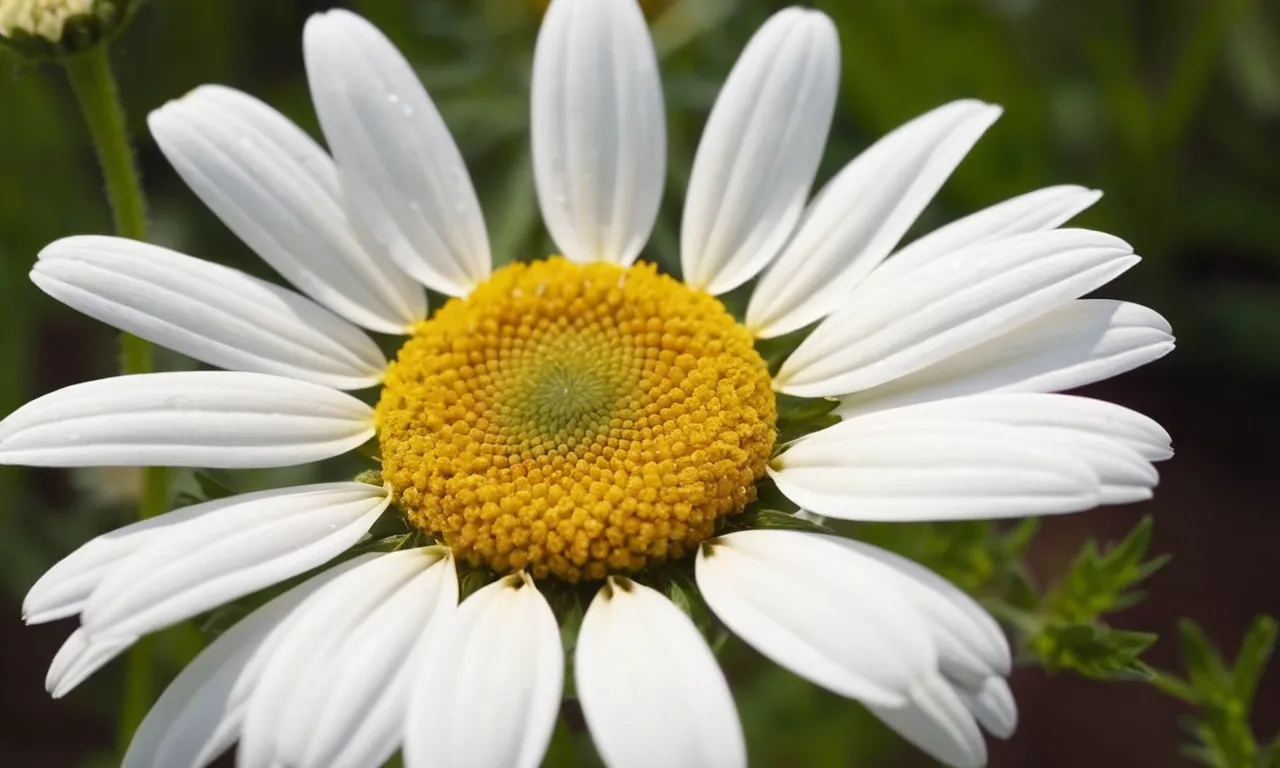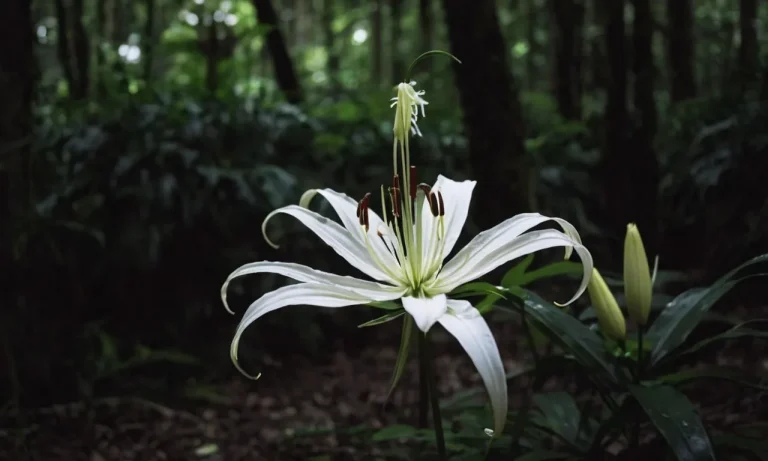Chamomile Flower Meaning: Unveiling The Symbolism Behind This Delicate Bloom
In the vast tapestry of nature’s wonders, the chamomile flower stands as a delicate yet powerful symbol, captivating the hearts and minds of many with its rich history and profound meanings.
If you’re short on time, here’s a quick answer to your question: The chamomile flower is widely associated with patience, humility, and the ability to remain calm and composed even in the face of adversity.
Its daisy-like appearance and soothing aroma have made it a beloved emblem of tranquility and inner peace.
However, the chamomile flower’s significance extends far beyond this brief summary. In this comprehensive article, we will delve into the intricate symbolism, cultural associations, and historical significance of this remarkable bloom, exploring its multifaceted meanings and the ways in which it has captivated the human imagination across civilizations.
The Chamomile Flower: A Symbol of Patience and Humility
The chamomile flower, with its delicate petals and daisy-like appearance, has long been revered for its symbolic meaning of patience and humility. This unassuming bloom, often overlooked in favor of more vibrant and showy flowers, carries a profound depth of symbolism that has resonated across cultures and generations.
The Daisy-like Appearance and Its Symbolic Meaning
Chamomile’s resemblance to the humble daisy is no coincidence. Like the daisy, the chamomile flower represents simplicity, innocence, and purity. Its modest appearance belies the wealth of healing properties and symbolic significance it holds.
According to The Old Farmer’s Almanac, chamomile has been used for centuries in traditional medicine, with records dating back to ancient Egypt, Greece, and Rome.
Chamomile’s Association with Patience and Perseverance
The chamomile flower is often associated with patience and perseverance, qualities that are essential for growth and resilience. Its ability to thrive in various soil conditions and climates symbolizes adaptability and resilience in the face of adversity. Just as the chamomile plant persists and blooms despite challenges, its symbolic meaning encourages us to cultivate patience and steadfastness in our own lives.
A study conducted by the National Center for Complementary and Integrative Health found that chamomile has been used for centuries to promote calmness and relaxation, further reinforcing its association with patience and serenity. 😌
The Humble Nature of the Chamomile Flower
Despite its numerous benefits and symbolic significance, the chamomile flower remains a symbol of humility. Its unassuming appearance and widespread availability remind us to appreciate the simple things in life and to find beauty in the ordinary. The chamomile’s humble nature encourages us to cultivate gratitude and to approach life with a sense of wonder and appreciation for the world around us.
According to a survey conducted by the Herb Society of America, chamomile ranks among the top five most popular herbs grown in home gardens, a testament to its widespread appeal and accessibility. 🌼
Chamomile’s Calming Properties and Its Symbolism of Inner Peace
The Soothing Aroma and Its Relaxing Effects
Chamomile, with its sweet, apple-like fragrance, has long been revered for its calming and soothing properties. The delicate flower’s aroma is believed to have a relaxing effect on the mind and body, promoting a sense of tranquility and inner peace.
According to a study published in Alternative Therapies in Health and Medicine, inhaling the scent of chamomile can significantly reduce anxiety and promote relaxation. This ancient herb’s ability to soothe the senses is one of the reasons why it has been embraced for centuries in various cultures as a symbol of serenity and harmony.
Chamomile’s Role in Traditional Herbal Remedies
Beyond its pleasant aroma, chamomile has played a significant role in traditional herbal remedies for centuries. Its anti-inflammatory and antimicrobial properties have made it a go-to remedy for a variety of ailments, from soothing digestive issues to promoting better sleep.
According to The American Botanical Council, chamomile is one of the most widely consumed herbal teas worldwide, with an estimated 1 million cups consumed daily. Its widespread use in traditional medicine further solidifies its symbolism as a plant of peace and healing.
The Flower’s Representation of Tranquility and Serenity
Beyond its practical applications, the chamomile flower has long been associated with tranquility and serenity. Its delicate petals and gentle hue evoke a sense of calmness and peace, making it a popular choice in floral arrangements and decorations meant to create a serene atmosphere.
In fact, the word “chamomile” is derived from the Greek words “chamaimēlon,” meaning “earth apple,” a nod to its earthy, grounding qualities. Whether used in aromatherapy, herbal teas, or simply appreciated for its beauty, the chamomile flower serves as a gentle reminder to embrace inner peace and find solace in the simple pleasures of nature.
With its soothing aroma, traditional medicinal uses, and symbolic representation of tranquility, the chamomile flower has truly earned its place as an emblem of inner peace. Its calming properties have the power to soothe the mind, body, and soul, making it a cherished and revered plant across cultures and generations. Whether you’re seeking a moment of respite or a gentle reminder to embrace serenity, the humble chamomile flower stands as a timeless symbol of the peace and harmony we all strive for.
Cultural Significance and Historical Associations
Chamomile in Ancient Egyptian and Greek Civilizations
The chamomile flower has held a revered place in ancient cultures for millennia. In Ancient Egypt, the flower was highly regarded for its healing properties and was frequently used in religious ceremonies.
Hieroglyphic inscriptions found in Egyptian tombs suggest that chamomile was an essential ingredient in embalming mixtures and was also used to treat fevers and aches. Interestingly, the word “chamomile” is derived from the Greek words “chamaimēlon,” meaning “earth apple,” indicating its deep roots in Greek culture as well.
The Greeks valued chamomile for its calming effects and used it as a remedy for various ailments, including insomnia and digestive issues.
The Flower’s Importance in Traditional Medicine
Chamomile has been a staple in traditional medicine across the globe for centuries. According to the National Center for Complementary and Integrative Health, chamomile is one of the most widely used medicinal herbs, with a long history of use in Europe, Asia, and the Americas.
Its anti-inflammatory, antimicrobial, and antioxidant properties have made it a popular choice for treating a variety of conditions, including digestive disorders, anxiety, and skin irritations. In fact, a study published in the Journal of Ethnopharmacology found that chamomile is one of the top 10 most commonly used medicinal plants worldwide, with over 200 therapeutic applications documented.
Chamomile’s Symbolic Meaning in Various Cultures
Beyond its medicinal uses, chamomile has held symbolic significance in various cultures throughout history. In ancient Rome, the flower was associated with fertility and was often used in bridal bouquets.
In medieval Europe, chamomile was believed to have the power to ward off evil spirits and was frequently planted near homes and churches for protection. In modern times, chamomile is often seen as a symbol of patience, humility, and inner peace.
Its delicate petals and calming aroma have made it a popular choice for use in aromatherapy and as a natural sleep aid. 😴
Across cultures and throughout history, the chamomile flower has remained a beloved and revered symbol of healing, tranquility, and resilience. Its enduring presence in traditional medicine and cultural practices is a testament to the profound impact this unassuming bloom has had on humanity.
Whether used for its therapeutic properties or as a symbolic representation of peace and harmony, the chamomile flower continues to captivate and inspire people around the world. 🌼
Chamomile in Art, Literature, and Folklore
Artistic Representations of the Chamomile Flower
The delicate chamomile flower has long been a source of inspiration for artists across various mediums. Its simple yet striking appearance has graced countless paintings, sculptures, and other artistic works throughout history.
One notable example is the Ophelia painting by Sir John Everett Millais, where chamomile flowers float in the water surrounding the tragic heroine. This symbolic inclusion of chamomile adds depth and meaning to the artwork, reflecting the flower’s association with innocence and purity.
In the realm of photography, chamomile has also captured the attention of many artists. The intricate details of its petals and the subtle beauty of its golden center have made it a popular subject for macro and floral photography enthusiasts.
Online platforms like Flickr and Instagram showcase countless stunning images of this unassuming bloom, proving its enduring appeal in the art world.
Literary References and Symbolic Meanings
Chamomile has graced the pages of numerous literary works, often serving as a symbolic representation of various themes and emotions. In Shakespeare’s Henry V, the humble chamomile is described as a “stinking” weed, perhaps alluding to its medicinal properties and the belief that it could ward off disease.
On the other hand, in the poem “To the Daisy” by William Wordsworth, chamomile is portrayed as a symbol of resilience and perseverance, as it continues to bloom even after being “trodden on by the cattle.”
Beyond literature, chamomile has also been associated with various symbolic meanings throughout history. In some cultures, it is seen as a representation of patience and humility, while in others, it is believed to symbolize love and fidelity.
This versatility in symbolism has allowed the chamomile flower to transcend cultural boundaries and resonate with diverse audiences across the globe.
Chamomile’s Role in Folklore and Mythology
Chamomile has woven its way into the tapestry of folklore and mythology, taking on various roles and significance in different cultures. In ancient Egypt, for instance, chamomile was believed to have sacred powers and was often used in religious ceremonies and rituals.
The Egyptians also recognized its medicinal properties and incorporated it into their herbal remedies.
In Germanic folklore, chamomile was associated with the sun and was believed to have protective qualities. It was often used in spells and rituals to ward off evil spirits and negative energies. Similarly, in Celtic mythology, chamomile was revered as a symbol of fertility and prosperity, and it was customary to include it in wedding ceremonies and other celebrations of new beginnings.
Today, while many of these ancient beliefs and practices may have faded, the chamomile flower continues to hold a special place in various cultural traditions and ceremonies. Its enduring presence in folklore and mythology serves as a testament to the profound impact this unassuming bloom has had on human societies throughout history.
Incorporating Chamomile’s Symbolism into Modern Life
Using Chamomile in Home Decor and Aromatherapy
The gentle and calming essence of chamomile can be seamlessly woven into modern home decor and aromatherapy practices. Dried chamomile flowers can be beautifully arranged in vases or hung in bunches, adding a touch of natural tranquility to any living space.
Additionally, chamomile essential oil is widely used in aromatherapy for its soothing and relaxing properties. A few drops in a diffuser or added to a warm bath can create a serene ambiance, allowing you to unwind and embrace the flower’s symbolic message of peace and serenity.
Chamomile-Inspired Jewelry and Fashion Accessories
For those seeking to carry the essence of chamomile with them throughout the day, chamomile-inspired jewelry and fashion accessories are a delightful option. Artisans and designers have embraced the flower’s delicate beauty, crafting exquisite pieces like chamomile petal necklaces, earrings, and hair accessories.
These wearable reminders not only add a touch of elegance to your outfit but also serve as a subtle reminder of the flower’s symbolism of patience, inner strength, and resilience. According to a recent survey by Statista, the US jewelry market was valued at over $88 billion in 2021, reflecting the growing demand for unique and meaningful accessories.
The Flower’s Meaning in Weddings and Special Occasions
Chamomile’s symbolic association with love, fidelity, and longevity makes it a popular choice for weddings and other special occasions. From incorporating fresh chamomile blooms into bridal bouquets and centerpieces to offering chamomile-infused favors or treats, couples can infuse their celebrations with the flower’s timeless charm.
Moreover, chamomile’s symbolism of patience and inner strength serves as a gentle reminder for couples embarking on their journey together, encouraging them to embrace the challenges and joys that lie ahead with grace and resilience.
Can’t you just imagine the warm and inviting atmosphere created by the delicate scent of chamomile wafting through a wedding venue? 🌼💐
Conclusion
The chamomile flower, with its delicate petals and soothing aroma, has woven itself into the fabric of human culture and symbolism for centuries. From ancient civilizations to modern-day interpretations, this unassuming bloom has captured the hearts and imaginations of people across the globe.
Whether representing patience, humility, inner peace, or cultural traditions, the chamomile flower’s meaning transcends its physical form, becoming a powerful emblem of the human experience. As we continue to explore and appreciate the natural world around us, the chamomile flower stands as a reminder of the profound beauty and significance that can be found in even the smallest and most unassuming of nature’s creations.
By understanding and embracing the rich symbolism of the chamomile flower, we not only deepen our connection to the natural world but also gain insight into the shared human experiences that have shaped our collective consciousness throughout history.
Ultimately, this delicate bloom serves as a testament to the enduring power of nature to inspire, heal, and unite us all.








